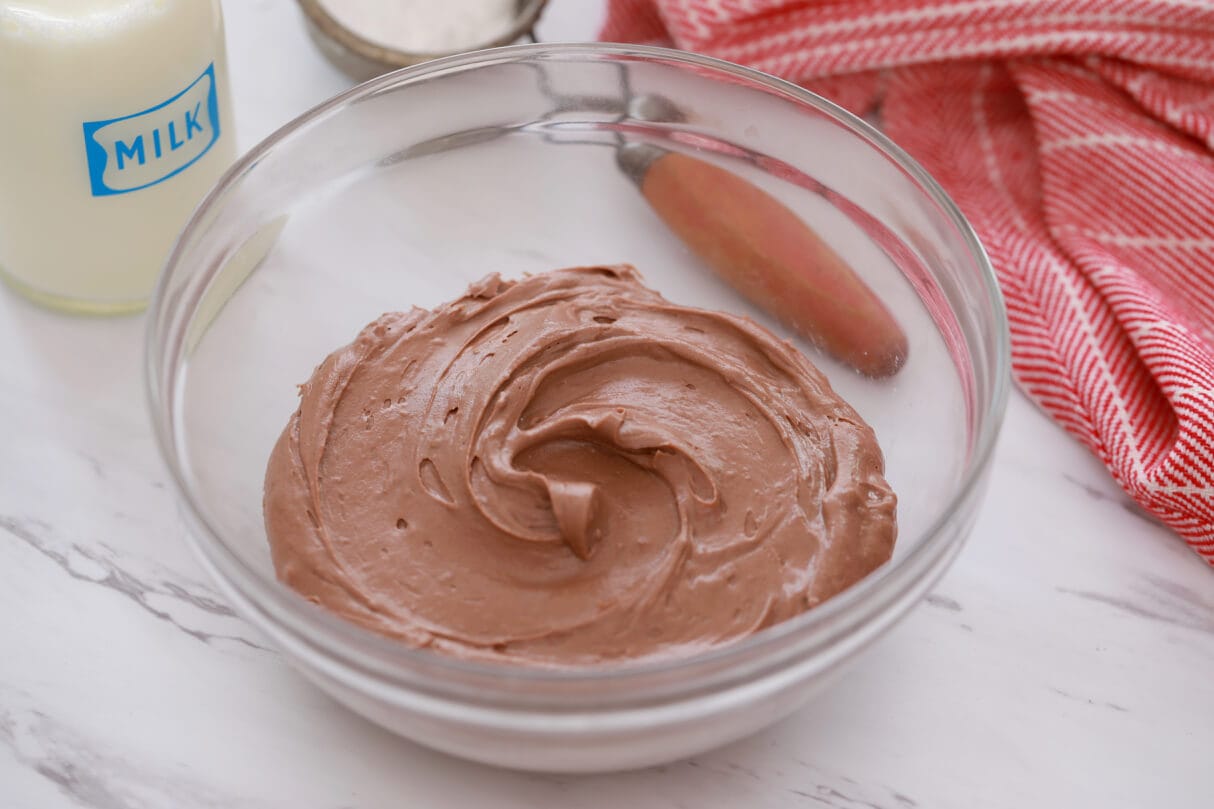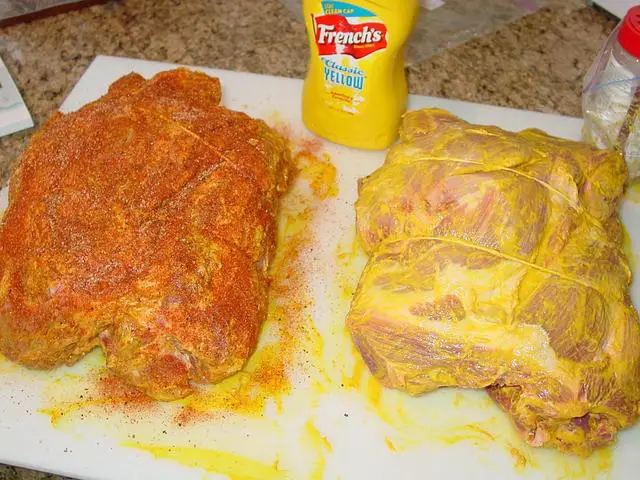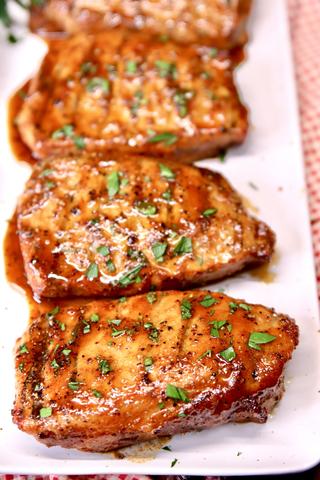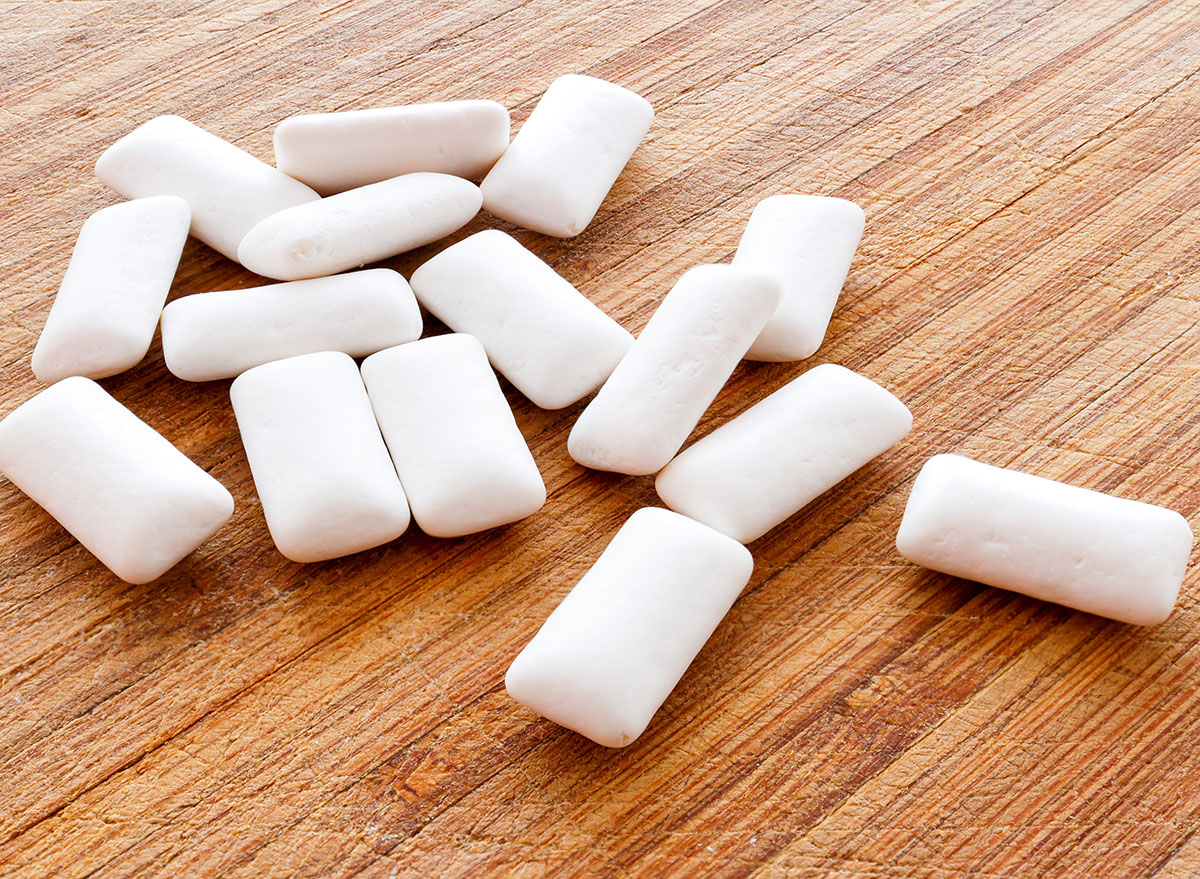
“Discover the secret to achieving irresistibly thick and luscious frosting with our simple yet effective techniques. From expert tips on ingredient ratios to foolproof methods of adding body, elevate your baking skills and create decadent desserts that will leave everyone craving for more. Say goodbye to thin and runny frosting – let us show you how to achieve the perfect thickness every time.”
How to Thicken Frosting
If you find yourself with a runny frosting, there are several methods you can try to thicken it back up. One option is to refrigerate the frosting, as the cold temperature will help solidify it. Another method is to add thickening ingredients like powdered sugar or shortening. These ingredients will absorb any excess liquid in the frosting and make it thicker.

When making homemade frosting, there are a few reasons why it may not be thick enough. It could be due to an unbalanced recipe or using warm ingredients in a warm kitchen. To prevent this, keep all your ingredients cold and work in a chilled environment.
If your buttercream or cream cheese frosting is too thin, adding more powdered sugar can help thicken it. Cream cheese can also be added to provide fat and act as an emulsifier. Gelatin and marshmallow fluff are other options for thickening frosting, but they may make it overly sweet. Cornstarch can also be used, but be cautious of its impact on the flavor.
Why Is My Frosting Not Thick?

There are several reasons why your frosting may not be thick enough. One common issue is not using enough powdered sugar in the recipe. Powdered sugar helps absorb any excess liquid in the frosting and make it thicker. Another factor could be adding too much liquid, such as milk or cream, which can thin out the frosting.
If you didn’t add enough butter or cream cheese to the frosting, it may not be thick enough. These ingredients provide fat that acts as an emulsifier and helps thicken the frosting. Additionally, if you didn’t give the frosting enough time to chill in the refrigerator, it may not have had a chance to solidify and become thicker.
The humidity in your environment can also affect the consistency of the frosting. Moisture in the air can make the frosting too thin. Understanding these factors will help you identify why your frosting isn’t thick enough and choose the appropriate method to fix it.
6 Ways to Thicken Frosting
If you find yourself with runny frosting that is ruining your baked goods, don’t worry! There are several quick fixes you can try to thicken it up and salvage your creations. One of the easiest methods is to simply put the frosting in the refrigerator to chill. The cold temperature will help solidify the butter and other ingredients, resulting in a thicker consistency.
Another option is to add thickening ingredients like powdered sugar or shortening. These ingredients will absorb any excess liquid in the frosting and help give it structure. When adding powdered sugar, do so gradually and mix well after each addition until you reach the desired thickness.
If you’re looking for a tangier flavor, consider adding cream cheese to your frosting. Cream cheese has a fair amount of fat which acts as an emulsifier and helps thicken the frosting. Soften the cream cheese beforehand and only add small amounts at a time until you achieve the desired consistency.
Gelatin can also be used to stabilize and firm up frosting, especially in hot weather when other elements may melt. Mix marshmallow fluff into your frosting for a fluffy texture that binds all the ingredients together, making it thicker. However, keep in mind that this method can make the mixture overly sweet, so balance it out with a pinch of salt if necessary.
An alternative thickening agent is cornstarch. Mix cornstarch with water to create a slurry, then heat the frosting over low heat while stirring constantly until it thickens. Be cautious not to overheat it as this can cause curdling or graininess.
Lastly, if you’re making ermine frosting (cooked-flour frosting), ensure that you cook it long enough for the starches in flour to swell and thicken the mixture. If it appears too thin, let it cook a bit longer on medium heat.

Add Powdered Sugar
If your frosting is too thin, one of the easiest ways to thicken it is by adding powdered sugar. The powdered sugar will absorb any excess liquid in the mixture, resulting in a thicker consistency. It’s best to sift the powdered sugar before adding it to the frosting to avoid clumps. Start by adding a small amount of powdered sugar, about half a tablespoon at a time, and stir it in before adding more. This gradual incorporation will help you achieve the desired thickness without overdoing it.
To prevent your frosting from becoming runny in the first place, it’s important to keep all of your ingredients cold while making it. Butter, which is often used as a base for frosting, has a tendency to warm up and liquify easily, especially in warm kitchens or humid environments. By keeping all of your ingredients chilled until you’re ready to use them, you can maintain the proper viscosity of your frosting. If your frosting has become runny due to temperature changes, putting it in the refrigerator or freezer for a few minutes can help cool it down and thicken it back up.
Another method to thicken frosting is by adding cream cheese or gelatin. Cream cheese contains enough fat that acts as an emulsifier and helps thicken the frosting. You can use softened cream cheese and gradually add tablespoons at a time until you reach your desired consistency. Gelatin is a protein that stabilizes and firms up frostings, especially in hot weather when other elements tend to melt. To incorporate gelatin into your frosting, bloom it first by mixing with cold water, melt gently either in the microwave or over boiling water, then temper with warm cream or milk before adding it to your frosting.
Remember that these methods may slightly alter the flavor or sweetness of your frosting, so it’s important to taste as you go and adjust accordingly.
Let the Frosting Cool
One of the best ways to thicken runny frosting is to let it cool. If your frosting has become too thin due to warm temperatures or a humid environment, placing it in the refrigerator for 5-10 minutes can help it firm up. You can also speed up the process by putting the frosting in the freezer, but be sure to keep an eye on it so it doesn’t freeze completely.
If your buttercream or cream cheese frosting is too thin, adding more powdered sugar can help thicken it. The powdered sugar will absorb any excess liquid in the mixture and make it thicker. Add small amounts of powdered sugar at a time, stirring well after each addition, until you reach your desired consistency.
Another way to thicken frosting is by adding cream cheese. Cream cheese contains fat which acts as an emulsifier and helps bind the ingredients together. It also provides a slight tangy flavor to offset the sweetness of the frosting. Soften the cream cheese before adding it to your frosting, and only use a tablespoon at a time until you achieve your desired thickness.
For a fluffy and stable frosting, you can incorporate gelatin or marshmallow fluff into your mixture. Gelatin helps stabilize and firm up frostings, especially in hot weather when other ingredients tend to melt. Marshmallow fluff adds stickiness and airiness to bind all the ingredients together. Be mindful that both options may make the frosting overly sweet, so consider balancing out with a pinch of salt.
If you’re making ermine frosting (also known as boiled milk frosting), heating cornstarch with milk causes starches to swell and thicken the frosting. Cook the mixture over medium heat to prevent burning or browning. However, be aware that cornstarch can affect the flavor, so use it sparingly and taste the frosting as you go along. For flavored frostings, consider using alternative thickening agents like cocoa powder or fruit puree to maintain the desired taste.
By following these tips and techniques, you can easily thicken your runny frosting and save it from being a baker’s worst nightmare.
Add Cream Cheese
Cream cheese can be a great addition to help thicken frosting. It contains a fair amount of fat, which acts as an emulsifier and helps to bind the ingredients together. One advantage of using cream cheese is that it adds a slight tangy flavor to the frosting, without making it overly sweet. Before adding cream cheese to your frosting, make sure it is softened to room temperature, as using cold or melted cream cheese can result in a runnier consistency. Start by adding a tablespoon of cream cheese at a time until you achieve the desired thickness for your frosting.
Add Gelatin
Gelatin is a protein that can help stabilize and firm up frosting, especially in hot weather when other ingredients tend to melt. To use gelatin to thicken frosting, start by blooming the gelatin by mixing it with cold water and letting it sit for a few minutes. Then, melt the gelatin by gently heating it either in the microwave or over a pot of boiling water. After that, temper the gelatin by stirring in some warm cream or milk to prevent clumping. Finally, add the gelatin mixture to your frosting and mix well until it thickens to your desired consistency.
Using gelatin as a thickening agent can be particularly useful if you want a fluffy frosting. It helps bind all the ingredients together, resulting in a thicker texture. However, keep in mind that adding gelatin may slightly alter the flavor of your frosting. If you’re making flavored frosting like chocolate or strawberry, you may want to consider using a different thickening agent such as cocoa powder or fruit puree to avoid changing the taste too much.
Add Marshmallow Fluff
Adding Marshmallow Fluff to your frosting is a great way to thicken it up. The sticky and airy texture of the fluff helps bind all the ingredients together, resulting in a thicker frosting. To incorporate Marshmallow Fluff into your frosting, start by adding 2 tablespoons of fluff and folding it in. Repeat this process until you reach your desired thickness. Keep in mind that using Marshmallow Fluff can make the frosting overly sweet, so you may want to balance it out by adding a pinch of salt.
Another tip when using Marshmallow Fluff is to taste the frosting as you go along to ensure that it still tastes good and doesn’t become too sweet. You can also use other thickening agents, such as cocoa powder or fruit puree, if you’re making flavored frostings like chocolate or strawberry, to avoid altering the flavor too much.
Overall, incorporating Marshmallow Fluff into your frosting is an easy and effective way to thicken it and achieve the desired consistency for decorating cakes and cupcakes.
Use Cornstarch
One method to thicken frosting is to use cornstarch. To do this, create a slurry by mixing 1 tablespoon of cornstarch with 1 tablespoon of water in a small bowl. Heat the frosting over low heat, stirring constantly, until it thickens to the desired consistency. Be careful not to overheat the frosting as this can cause it to curdle or become grainy. Once thickened, remove the frosting from the heat and allow it to cool before using it to frost your cake or cupcakes.
Using cornstarch as a thickening agent is a simple and effective way to rescue runny frosting. However, keep in mind that cornstarch can slightly affect the flavor of the frosting, so use it sparingly and taste the frosting as you go to ensure it still tastes good. If you’re making flavored frosting such as chocolate or strawberry, consider using a different thickening agent like cocoa powder or fruit puree to avoid altering the flavor too much.
Overall, using cornstarch can help transform your thin frosting into a thicker and more manageable consistency for decorating your baked goods.
In conclusion, there are several simple and effective methods to thicken up frosting. By adjusting the ratio of ingredients, incorporating additional dry components, or using specialized thickening agents, you can easily achieve your desired consistency. Experiment with these techniques to enhance your baked goods and create beautifully thick and luscious frostings every time.
Learn More About Grilling
If you want to learn more about grilling, check out these other helpful resources!










